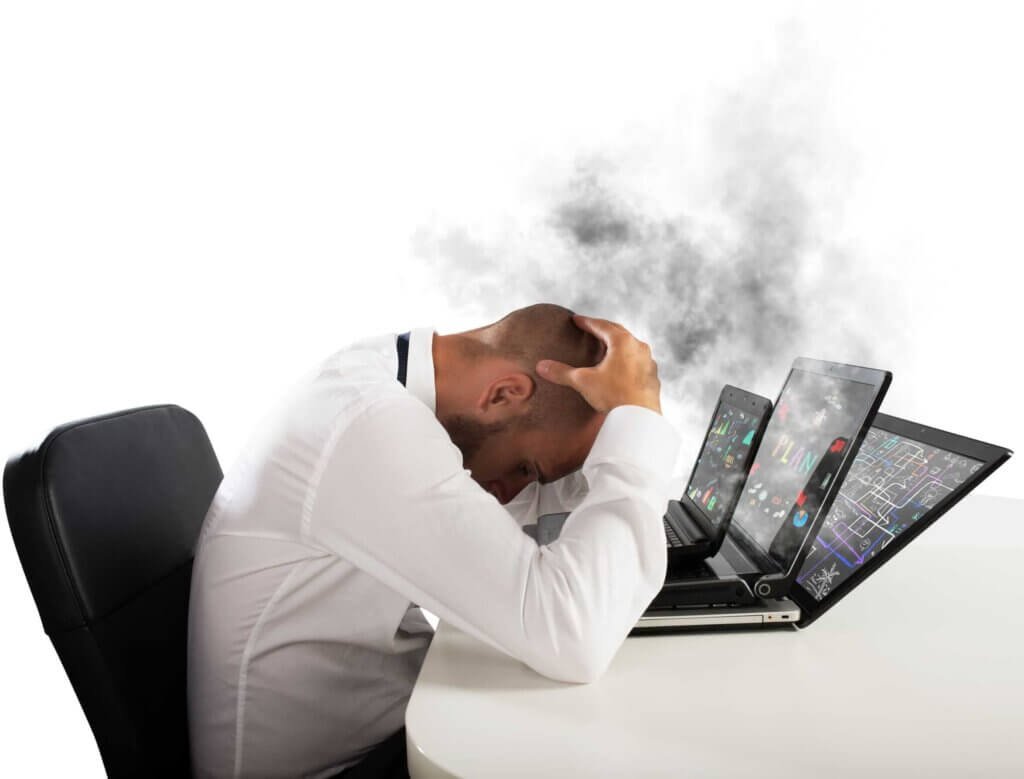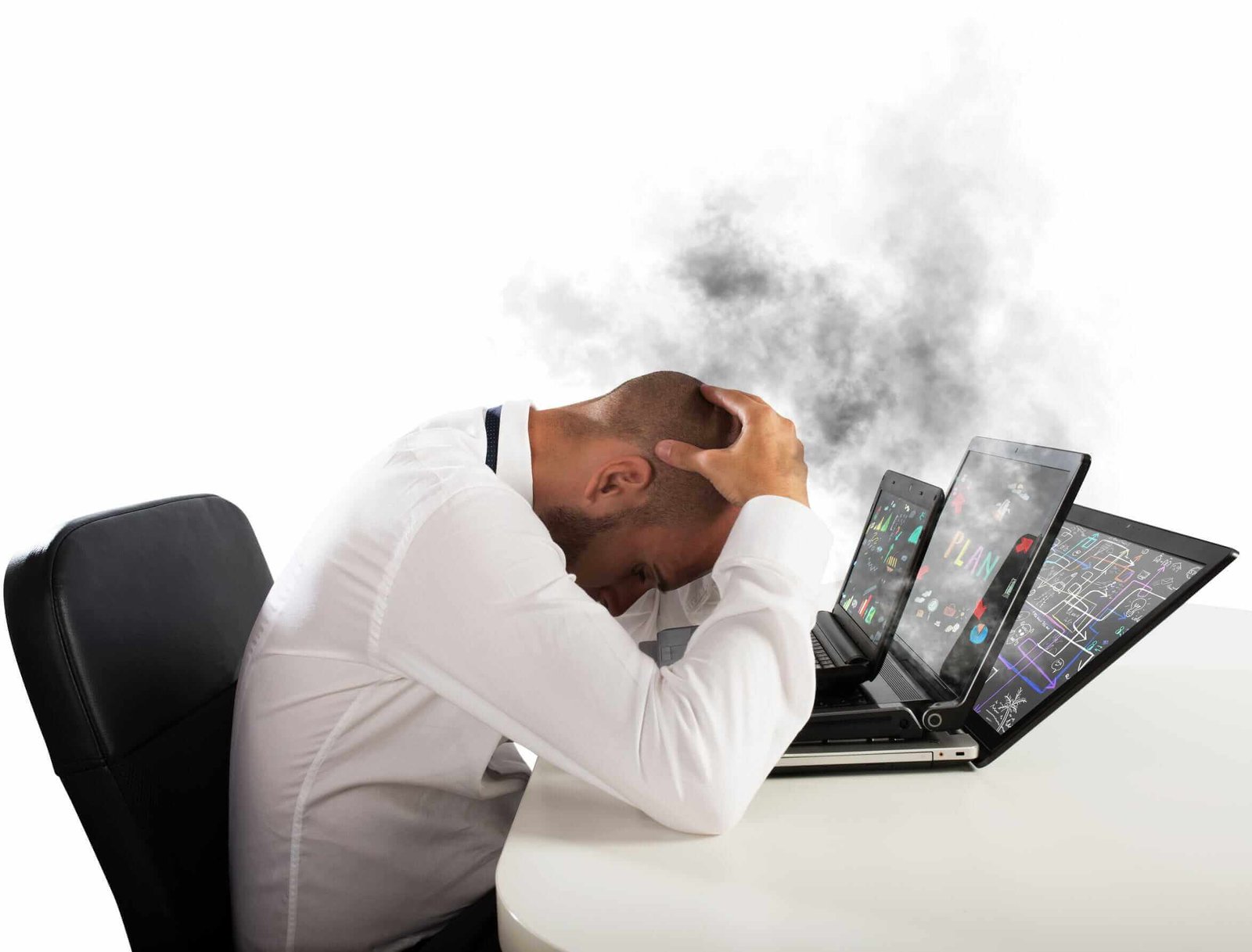
Overheating of the laptop while in use is a common phenomenon, especially with the older generation of laptops. This means that laptop users should be knowledgeable on how to prevent laptops from overheating while in use.
Laptops are usually very compact with little space for all their components. The net result of all the tasks the laptop accomplishes with its compact nature leads to the generation of heat.
When the heat produced overwhelms the laptop’s cooling system the laptop overheats which can cause permanent damage to the system.
Desktop computers may not have this problem because they have enough space for their different components, and thus are not prone to overheating like laptops.
Because of the potential risk of permanent damage to our system, it is important we know how to prevent laptops from overheating.
In addition to the design of the laptop which results in net heat generation, other factors can also lead to overheating of the laptop.
These factors include the following:
- Reduced airflow
This can happen when the air vents at the bottom and/or side of the laptop are covered. This can happen when the laptop is placed on an uneven surface such as a bed, pillow, lap and so on.
These surfaces significantly reduce the air absolved into the laptop, which will ultimately lead to overheating and potential damage.
2. Dust and dirt on the fan or vent
Dust and dirt can also limit the efficiency of the laptop cooling system which can lead to overheating.
3. Hardware issues
Internal hardware issues, such as an old laptop battery or decaying thermal paste may be the cause of the overheating and in such instances, you can prevent laptops from overheating by replacing the hardware parts.
How do I know when my laptop is overheating?
To effectively prevents laptops from overheating, you need to identify the early signs of overheating. The signs includes the following:
- When your system overheats its ability to perform the basic task will become sluggish. The applications and programs you were working on will suddenly become unresponsive.
- The laptop may suddenly short down while in use due to the laptop’s auto-protective mechanism.
- Error messages may also display on the screen indicating the laptop is overheating.
- The laptop may be noisy because of the increased speed of the laptop fan, aimed at cooling the laptop. If your system is constantly generating noise, then it is a strong indication that your laptop is overheating.
Fan-less laptops will not likely have fans or vents, and thus do not have an airflow cooling mechanism. The cooling system of fan-less laptops depends on the spread of heat across the entire metal body.
How to prevent laptops from overheating
The following measures can be taken to prevent laptops from overheating while in use.
- Rest the laptop
Once you notice the signs of overheating, it is advisable that you turn off the laptop and allow the system to cool down.
2. Airflow
Inspect the laptop vents and fan for patency and functionality. If dirt or dust is noticed it can be cleaned out with cotton bud and spirit or use of compressed air to clean the laptop’s vents.
3. Work in a cool environment
The temperature of your working environment is important. Avoid using or placing your laptop close to another source of heat as this will suddenly raise the temperature of your laptop to an unacceptable level.
4. Elevate your laptop
As earlier stated, overheating of laptops can arise from poor airflow. This problem can be solved sometimes by elevating the laptop with a small book or placing the laptop on a solid surface.
5 Laptop cooling pad
Apart from elevating the system as stated above, a cooling pad can also be used to prevent laptops from overheating. The cooling pads usually have extra fans which can augment the laptop fan and cooling system.
However, procuring the wrong cooling pad can actually make the overheating worse. Therefore, before getting a cooling pad, you need to understand the direction of airflow into and out of your laptop.
Most laptops absolve cooling air from the bottom of the device. Consequently, a cooling pad that is placed under the laptop should not blow air away from the laptop air intake vent, otherwise, the cooling pad will not augment the laptop cooling system but instead will aggravate the overheating.
If your laptop has an air intake vent at its bottom, then it is advisable to purchase a cooling pad that blows cool air upwards, toward the laptop. This will prevent the laptop from overheating.
Some cooling pads do not have fans rather they work by heat absorption. Such cooling pads can serve irrespective of the laptop’s airflow direction.
Cooling pads may also be very useful for fan-less laptops which are showing signs of overheating.
5. Avoid Intense processes on your laptop
Overheating of the laptop can occur following the use of programs that subject the laptop to increase work such as playing video games and running multiple programs at the same time.
It is advisable to make extra efforts to prevent your system from overheating if you run programs that can subject the system to heavy load.
6. Reducing the laptop’s maximum processor state
The maximum processor state is the optimal rate [100%] the laptop operates at when you are running a program or working on the laptop. This applies mainly to windows operating systems. It may also work on other systems.
To prevent laptops from overheating it is advisable to reduce the maximum processor state to 80-85% when on battery or plugged into a power source. This will reduce the heat generated by the system without any significant change in the performance of the laptop.
To reduce the maximum power processor state please follow the steps below:
- Navigate to the control panel.
- Click on Power options
- Click on Change Plan Settings
- Click on Change Advanced Power Settings
- Navigate to the Processor Power management and click on the [+] symbol to expand.
- Click on Maximum processor state and reduce the on battery and plugged in power settings to 80 to 85%.
7. Reducing the laptop’s maximum processor state
The default cooling policy of most systems is to allow maximal fan speed when plugged into a power source, however, when on battery the laptop cools passively which is not as effective as the former and might lead to overheating.
To prevent laptops from overheating while on battery, one will need to change the cooling policy to accommodate active cooling when on battery. This mostly applies to Windows operating systems.
To change the laptop cooling policy please follow the steps below:
- Navigate to Control Panel
- Click on Hardware and Sound,
- Click on Power Options.
- Click on Change Plan Settings
- Click on Change Advanced Power Settings, The Power Options dialogue box will appear.
- Navigate to the Processor Power Management option, and click on the “+” symbol beside it to open up a submenu.
- Click on System Cooling Policy from the submenu.
- Select Active both On Battery and when Plugged-in. This will allow active cooling whether on battery or when plugged into a
- power source. Click Apply and then OK.
Conclusion
The heating up of laptops can lead to damage and loss of data and resources. The information provided in this article will guide you on how to prevent laptops from overheating.
Read also: How to calibrate a laptop battery
